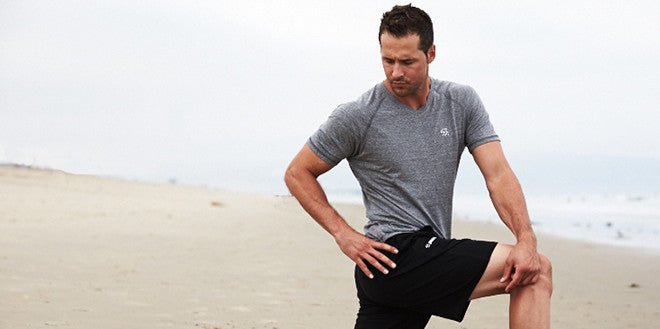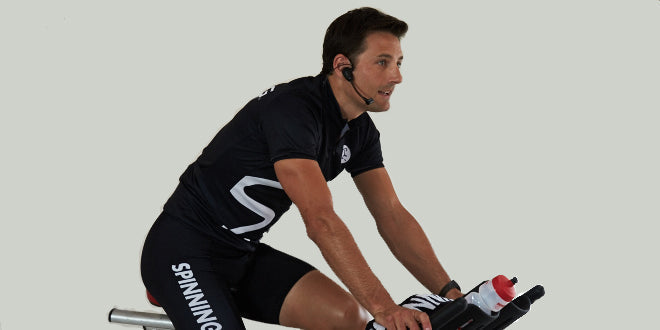By Chere LucettYou’ve decided it’s time to start performing a strength training routine. You’ve already kicked around training ideas and programming schematics, and you’ve decided you are ready to hit the weight floor and start your journey towards increasing muscle and feeling stronger. Before you blend your first protein shake, there are a few things you should know beyond pushing weights and determining sets and reps that will transform your routine and your results!Strength can be enhanced through various activities – in fact, many of them don’t require traditional weights at all. And these non-dumbbell-related activities should be implemented to maximize the benefits that come with a successful strength-training program. Known as integrated training, it is a method of training that combines various components into a complete workout that contributes to the overall goal of enhanced strength. In addition, integrated training not only improves strength, but other key physical elements that can enhance functionality and performance. Integrated training incorporates components such as mobility, core training, balance training, plyometrics and resistance training within a training routine. All of these modalities can enhance your strength, and research suggests an integrated training program can successfully improve all aspects of functional performance, such as movement quality, speed, agility, stability, flexibility, strength and power.
First – be mobile.
No, I’m not referring to your phone. I’m talking about doing your best to ensure good range of motion in your joints and control over that range of motion. That is what we call mobility. There’s more to flexibility than simply stretching. Flexibility is a combination of lengthening shortened muscles (static stretching) along with providing those muscles with neuromuscular control (movement). This will help your body not only increase range of motion, but stay in control of that range of motion. If muscles are at their appropriate lengths, they have the ability to generate force more effectively, which in turn results in improved strength. (Kokkonen, 2007; Shrier, 2004).
Get strong from the inside out.
Core training focuses on getting your core muscles conditioned, one of the most important facets of an exercise program. Your core consists of several muscles, such as the ones you can see, like the rectus abdominis, gluteus maximus and the external obliques, alongside those you cannot see, like the internal obliques and the transverse abdominis. These core muscles help to support and stabilize your pelvis and spine. When these areas are stabilized, the rest of the body (arms and legs) has a solid foundation to control and support increased loads, while decreasing the risk of injury (Carter, 2006; Bergmark, 1989). This means you can lift more weight and increase your strength. And the best side effect of core training? Better looking abdominals!
Balance your ability to remain in control.
The more time we spend in these fixed, sedentary environments, the more our body adapts to them. When it comes time for us to move (walk, run, ascend or descend stairs), our nervous system has more difficulty controlling, or balancing, our structure in these more unstable environments. This lack of "dynamic control" can lead to an increased risk of injuries. Whether walking up a flight of stairs or sprinting down a basketball court, a degree of balance is required to ensure ideal movement and to minimize stress to our bodies. Balance training challenges our body's ability to stabilize itself outside of its base of support in a reactionary manner. This can be accomplished by putting your body in an unstable environment where safe control is still possible. Believe it or not, balance training will help you increase your overall strength. These unstable environments forces the nervous system to recruit more muscles to help control yourself while in these environments. Increased muscle fiber recruitment equals increases in strength (Rasool & George, 2007).
Be able to react. Fast!
No matter what the activity you’re doing, your ability to react and generate force quickly is crucial to overall function and safety during movement. Plyometric training can enhance your ability to dynamically stabilize, reduce and produce forces at speeds that are functionally appropriate to the tasks at hand. If the nervous system is not trained to recruit muscles quickly, it will not be able to respond appropriately when met with a demand that requires a speedy reaction. For example, stepping off a curb that is deeper than expected, you can lose your balance and fall. But if the nervous system has been trained to react quickly, you can recruit the right muscles, at the right time, allowing you to regain your balance and decrease your chance of injury (Bosco, 1982). In addition, the better that your muscles can reduce force and dynamically stabilize themselves, the better they can produce force, resulting in greater strength and power gains.
Stick with your principles.
The old adage goes that “if you want to be fast, train fast”. This old saying refers to the body’s ability to adapt to the demands placed on it, commonly known as the SAID principle. This stands for Specific Adaptation to Imposed Demands and implies that you get what you train for. In the context of resistance training, it provides an important framework for programming strategies. If you want to increase your endurance, then using lighter weights that allow you to train with more repetitions is advised. If you want to be bigger and gain muscle (hypertrophy), then you’ll want to use resistances that are heavier, but not so heavy that you can’t lift more than five repetitions. You’ll want to choose loads that you can push or pull for 6-12 repetitions, and you’ll want to add in more sets to overload your muscles. This helps make them grow while getting stronger. If your goal is to be faster, then you’ll want to train with lighter loads, but in a faster, explosive fashion. (Campos, 2002; Kraemer 2004).These are just a few of the most important factors when implementing a strength training routine. While these aren’t all specific to pushing around weights, they are all integral to ensuring your body remains healthy, strong and injury-free.
References
Bergmark, A. (1989). Stability of the lumbar spine. A study in mechanical engineering.
Acta Orthopaedica Scandinavica,
230 (suppl),20-24.Bosco, C., Viitasalo, J.T., et al. (1982) Combined effect of elastic energy and myoelectrical potentiation during stretch-shortening cycle exercise.
Acta Physiologica Scandinavica,
114(4), 557-565.Carter, J.M., et.al. (2006). The effects of stability ball training on spinal stability in sedentary individuals.
Journal of Strength and Conditioning Research,
20(2), 429-435.Campos, G., Luecke, T.J., Wendeln, H.K., et al. (2002). Muscular adaptations to three different resistance training regimens: Specificity of repetition maximum training zones.
European Journal or Applied Physiology,
88, 50-60.Kokkonen, J., Nelson, A., Eldridge, C., & Winchester, J. (2007). Chronic static stretching improves exercise performance.
Medicine & Science in Sports & Exercise, 39(10),1825-1831.Kraemer, W.J., & Ratamess, N.A. (2004). Fundamentals of resistance training: Progression and exercise prescription.
Medicine & Science in Sport & Exercise, 36(4),674-688.Rasool, J., & George, K. (2007). The impact of single-leg dynamic balance training on dynamic stability.
Physical Therapy in Sport,
8,177-184.Shrier, I. (2004). Does stretching improve performance? A systematic and critical review of the literature.
Clinical Journal of Sports Medicine,
14,267-273.Wilson, G.B., Elliot, B.C., & Wood, G.A.(1992). Stretch shorten cycle performance enhancement through flexibility training.
Medicine & Science in Sports & Exercise, 24(1),116-123.





Leave a comment
This site is protected by hCaptcha and the hCaptcha Privacy Policy and Terms of Service apply.